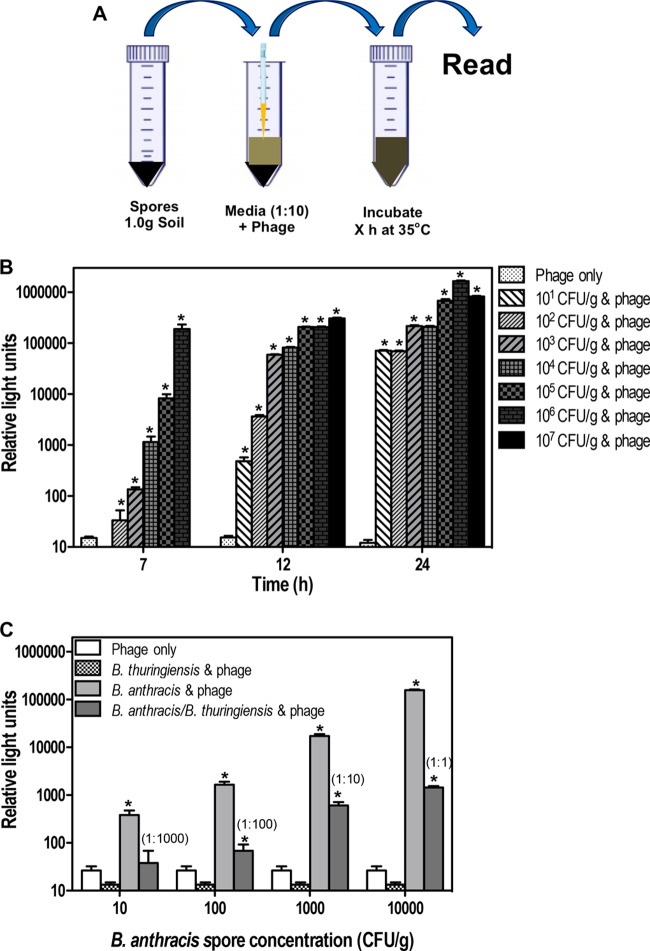FIG 4.
Detection of B. anthracis spores from defined soil. (A) Assay procedure. Unless otherwise stated, spores at the desired concentration were inoculated into sterile soil (1.0 g) and maintained overnight (∼16 h) at 4°C before the addition of Wβ::luxAB-2 (final concentration, 4 × 107 PFU/ml) and medium (containing 0.1 M l-alanine) at a 1:10 soil/medium ratio. Samples were then incubated for X h (where X is 7, 12, or 24 h) at 35°C and measured for bioluminescence following the addition of n-decanal. (B) Sensitivity limit of detection of B. anthracis spores in sterile soil. Spores (1.3 × 101 to 1.3 × 107 CFU/g) were inoculated into soil and measured for bioluminescence after 7, 12, and 24 h of incubation. (C) Effect of mixed bacterial populations on detection in sterile soil. B. anthracis spores (10 to 1,000 CFU/g) were inoculated into soil in the presence or absence of an excess of spores (10,000 CFU/g) from the nonpermissive B. thuringiensis strain 4AG1. Bioluminescence was measured after 12 h of incubation. Values represent the means ± SD (n = 3). *, P < 0.05 (two-way ANOVA) for results compared to those with the phage-only controls. In panel C, values in parentheses indicate the initial ratio of B. anthracis spores to B. thuringiensis spores.

